The chicken rig, a weedless hybrid between the Texas and Neko rig, was invented by Gary Yamamoto and has proven incredibly successful in a variety of scenarios.
After extensive research, testing, and consultation with other anglers, I’m sharing everything you need to know about this game-changing setup.
Last updated: January 7th, 2025
Anglers.com’s Wesley Littlefield shows us how to rig and fish the chicken rig in this video.
How to Set Up a Chicken Rig
The chicken rig is refreshingly simple to set up. It combines the weedless design of a Texas rig with the enticing action of a Neko rig, giving you the best of both worlds.
Gary Yamamoto, the same innovator who created the Senko worm, designed this setup. It takes two proven techniques, switches a few things up, and creates something even more effective for bass fishing.
Materials Needed: a soft plastic worm, a hook, line, and a weight or nail of your choice.
Here are the steps to set up the chicken rig:
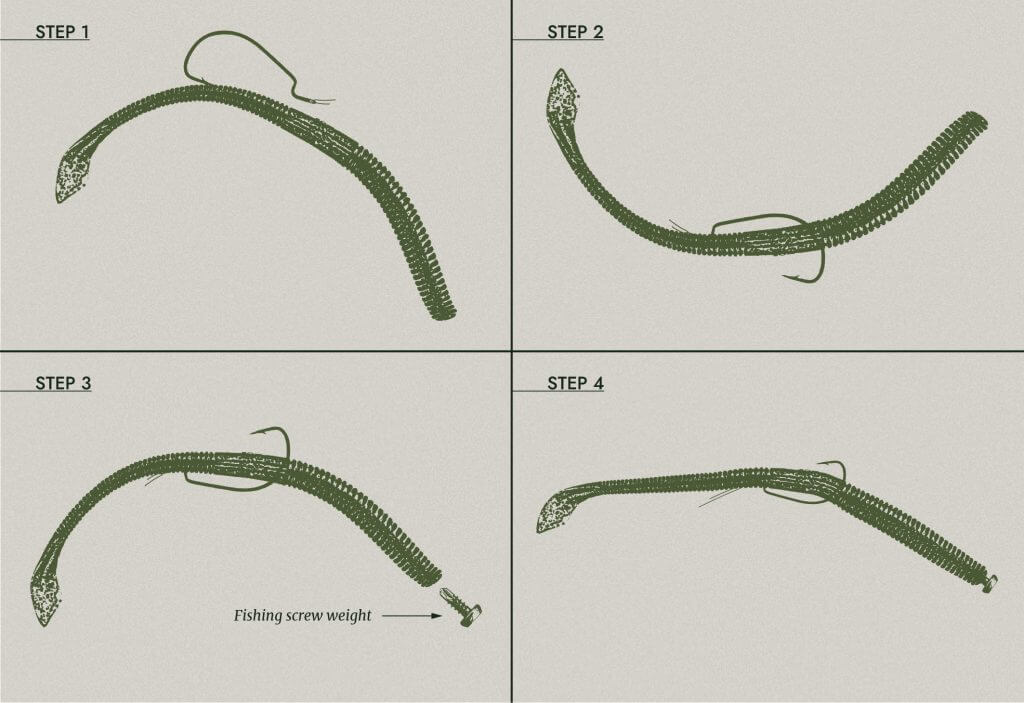
1. Get the Right Hook
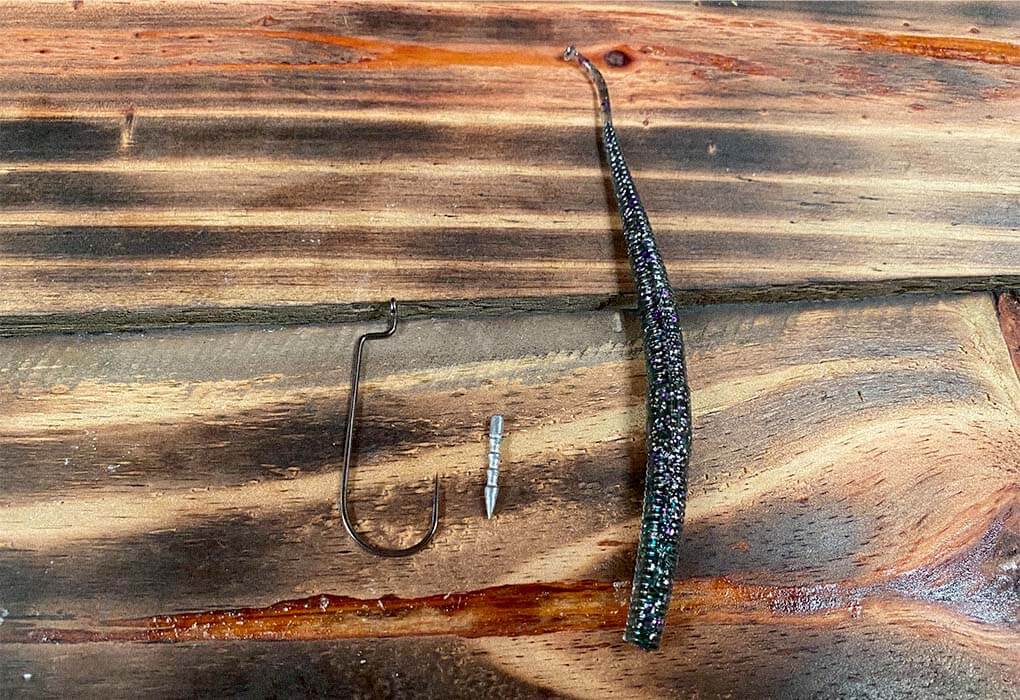
Take a 4/0 – 5/0 straight shank hook. Insert it about ⅔ down your soft plastic worm, running it almost completely through like you would with a Texas rig.
Unlike a wacky rig, this keeps your hook protected from snags. If you’re targeting larger species like Grouper, Snapper, or Catfish, you may want to consider adding a snap swivel to attach the hook.
2. Thread the Hook Point
When you reach the hook’s eye, flip it around and insert the point back through the plastic until it emerges on the other side of the worm.
3. Puncture the Worm
Here’s where the rig gets interesting.
You have two options for weighting: either use a dedicated fishing screw weight or follow Yamamoto’s own preference – a round-topped drywall screw.
Insert your chosen weight into the worm’s head. This creates a jig-like action but gives you the advantage of using heavier tackle without sacrificing the presentation.
What You Need for Chicken Rig Bass Fishing
Here’s what you need to fish the chicken rig effectively:
The Reel
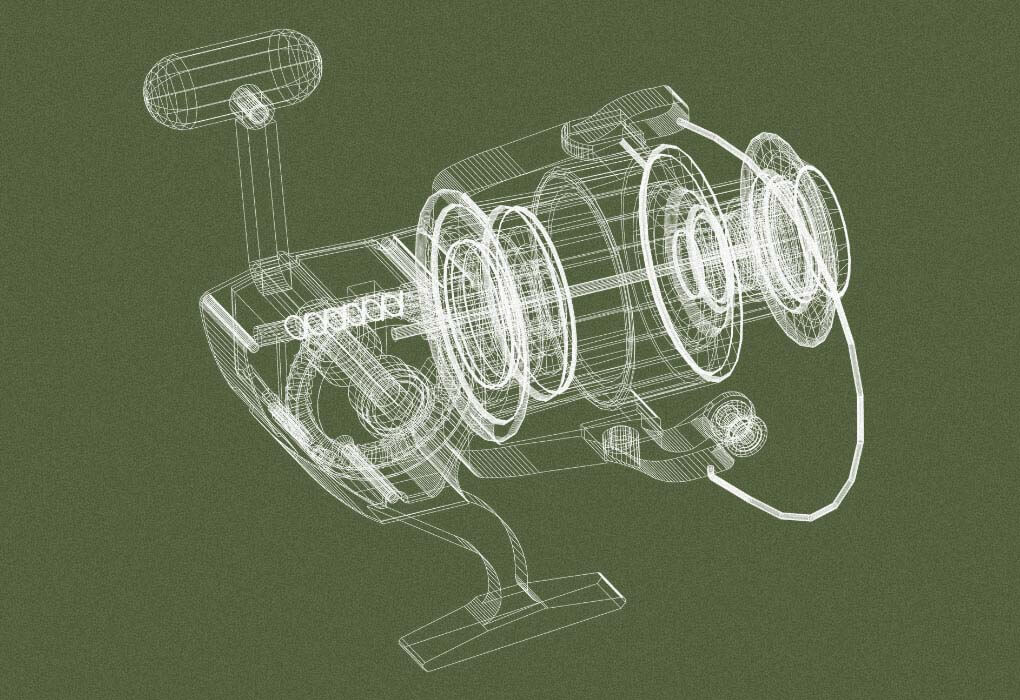
Go with a medium-heavy spinning reel – this is what Yamamoto himself uses.
When you’re fishing this rig, it’s important to understand that it’s a more power-angling style versus finesse fishing. You’ll be waiting for solid strikes rather than reacting to every tiny nibble.
The Rod
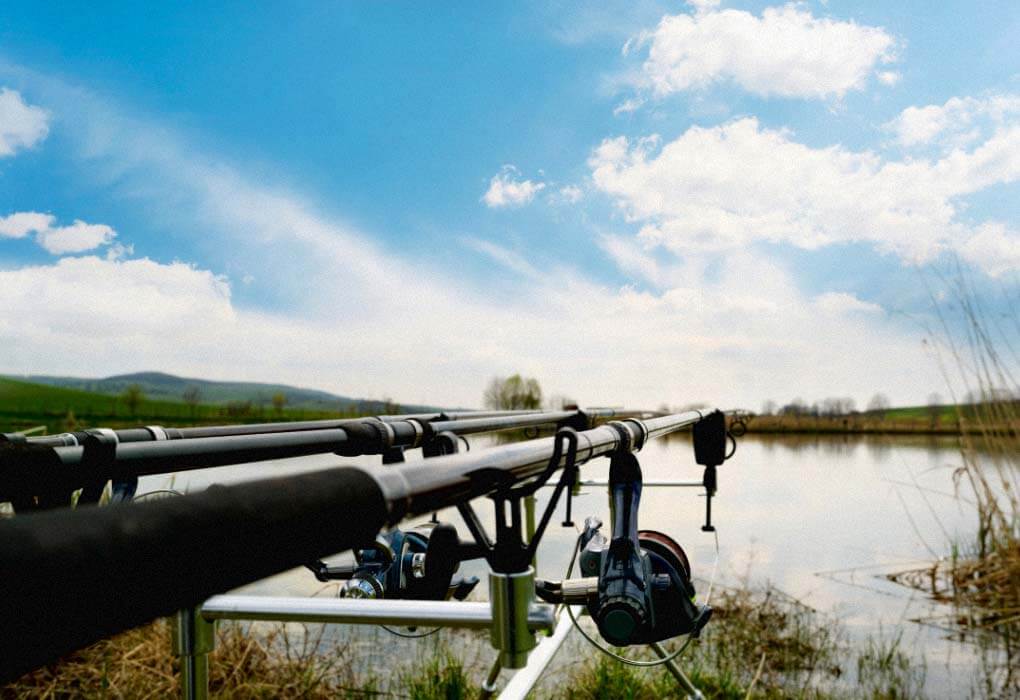
Match your medium-heavy reel with a spinning rod with moderate-fast action. This combo gives you enough power to handle big bass while still maintaining the sensitivity to feel some of those smaller nibbles.
Many people question whether or not spinning or baitcasting tackle is better for this type of rig, but as you know, I’m always swaying towards spinning rod and reel setups.
The Line
Yamamoto relies on a 15 or 20-pound braided mainline paired with a 16 or 20-pound fluorocarbon as his leader. We’ll follow his teachings and training here as well.
From my time on the water, the leader choice makes a real difference in presentation. Many people look for the best fishing line to pair with certain lures, and there’s no right or wrong answer, but there’s always a good reason to use a fluorocarbon leader.
If you decide to use mono for the rig, then you could likely get away without using a leader, but why not go with the real expert?
Pro angler Mike Iaconelli recommends using either a loop knot or a dropper loop with a dropshot for this rig.
The Worm
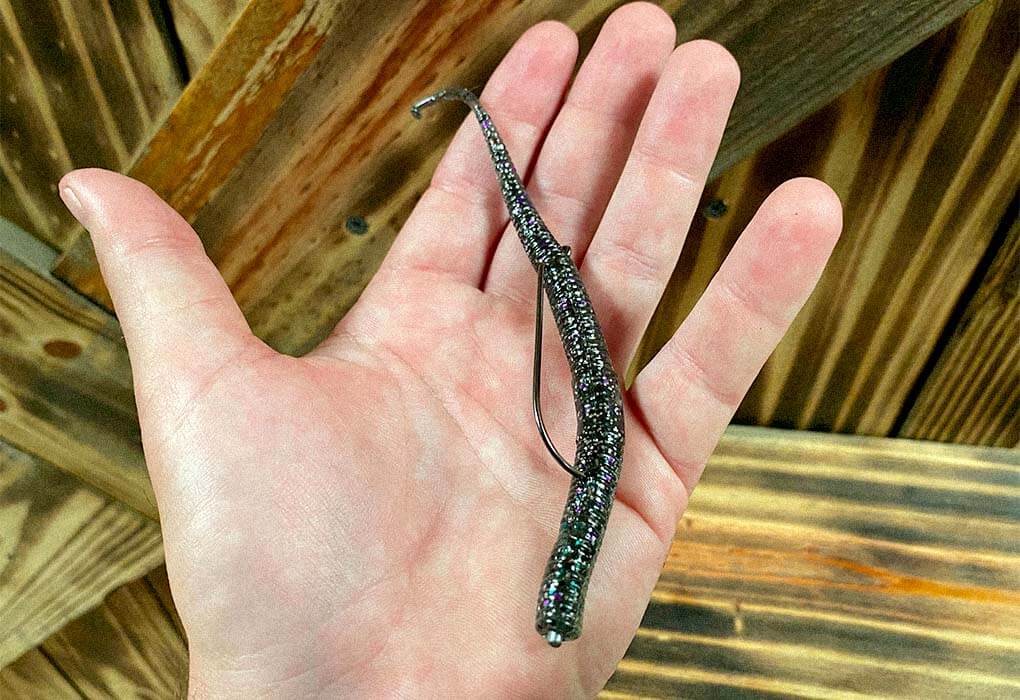
It’s obvious that you’re using a soft plastic worm with this rig, but which one?
Yamamoto suggests going with a 7.75 inch Kut Tail worm – it’s bigger than your typical soft plastic, but that’s part of the technique. The Kut Tail’s swirly action really shines during retrieval.
I personally like to use a Senko worm because I think it’s much easier to secure the nail weight into the top of the worm, and I prefer the Senko diameter because it makes it easier to set the hook.
That’s just me though.
Advantages of Chicken Rig Fishing
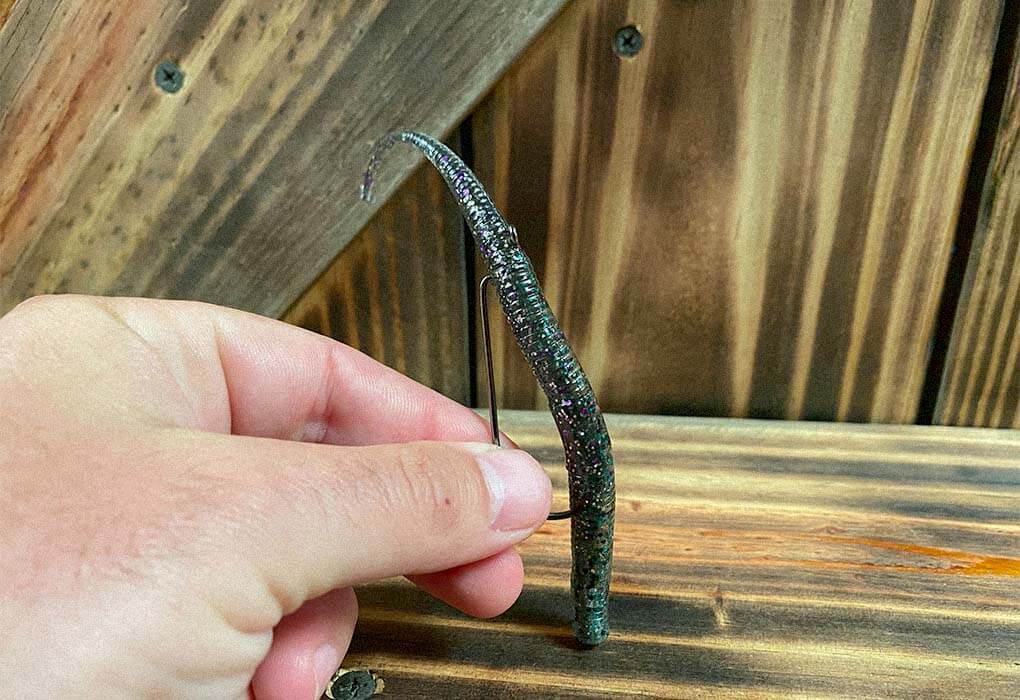
Unique Action
While finesse fishing dominates the bass scene these days (I’m guilty of it myself!), the chicken rig offers something unique. By weighting the worm backward, you create a presentation that mimics natural movement while being completely different from what bass typically see.
This matters because bass are curious predators, and they’re opportunistic. They’ll bite something simply because they’re unsure about it.
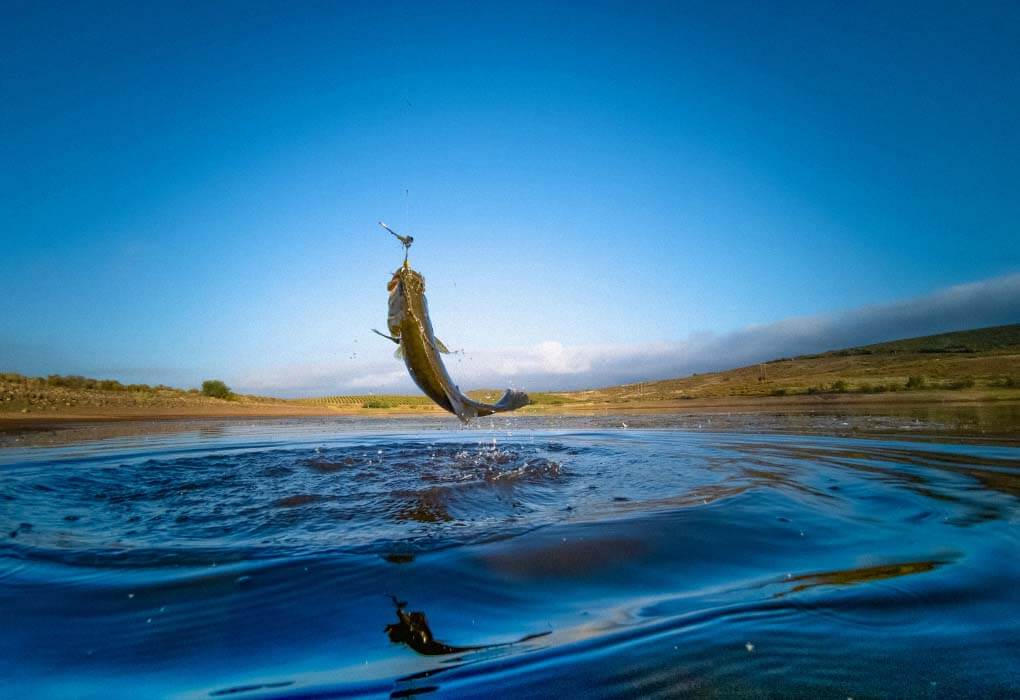
Weedless Design
It’s the best of both worlds – the snag-free nature of a Texas rig combined with the irresistible presentation of a Neko rig. You can fish confidently in heavy cover where other presentations would get hung up.
Superior Durability
When a bass strikes, the hook pulls cleanly through the worm. This means your soft plastic stays intact on the outside of the fish’s mouth while the exposed hook ensures a solid hookset.
The result? Your worms last longer and you land more fish.
Frequently Asked Question
Why is it called a chicken rig?
The chicken rig gets its name from the acronym “BWWK.” This stands for backward, wacky, weighted, kut tail.
When you say “BWWK” out loud, it kind of sounds like a chicken noise. Only a legend like Gary Yamamoto could come up with that!
Final Thoughts
The chicken rig is an awesome weedless setup that kills it with bass along the structure, weed beds, and rocks. Next time you’re out, give it a try.
You likely have everything you need in your tackle box to set this up.
Let me know in the comments if you give it a try!


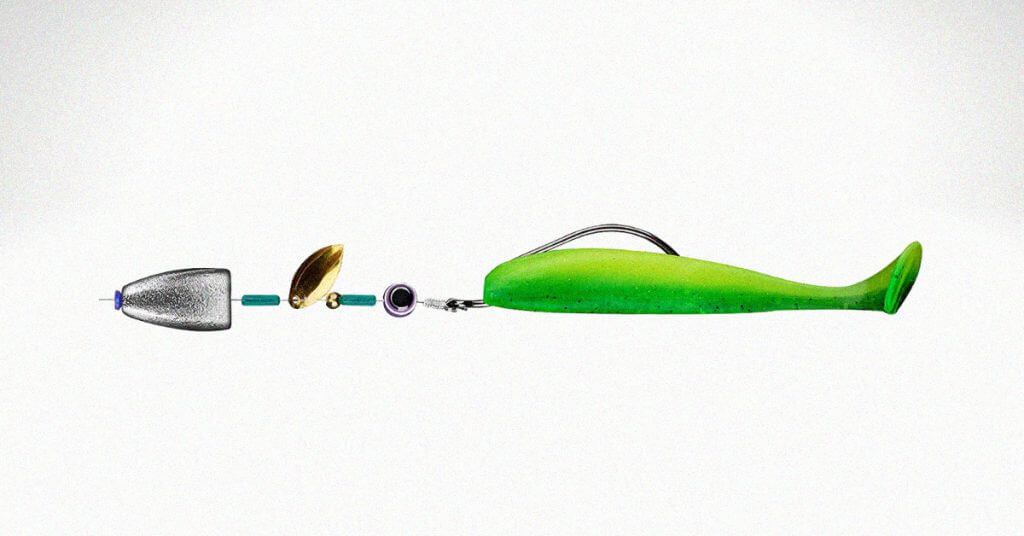
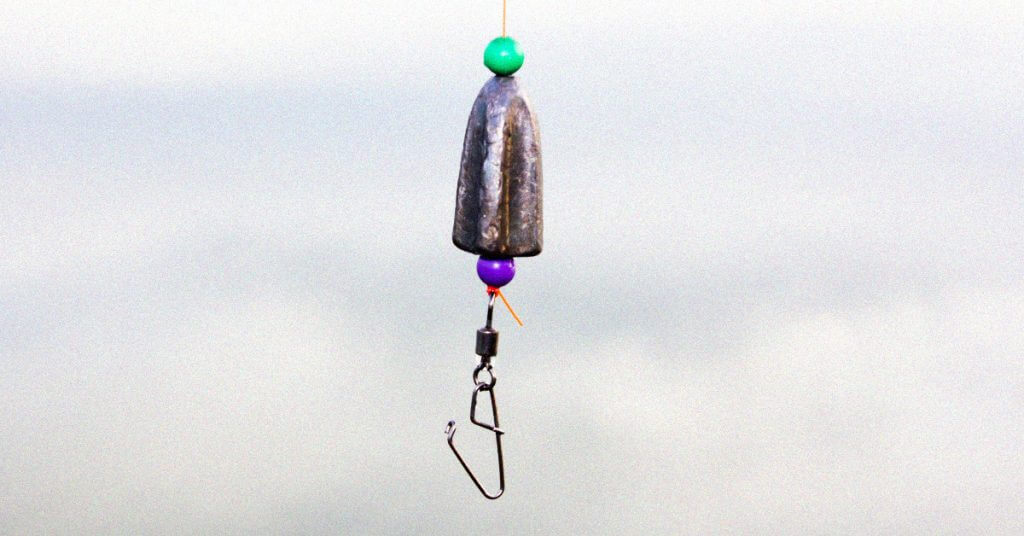
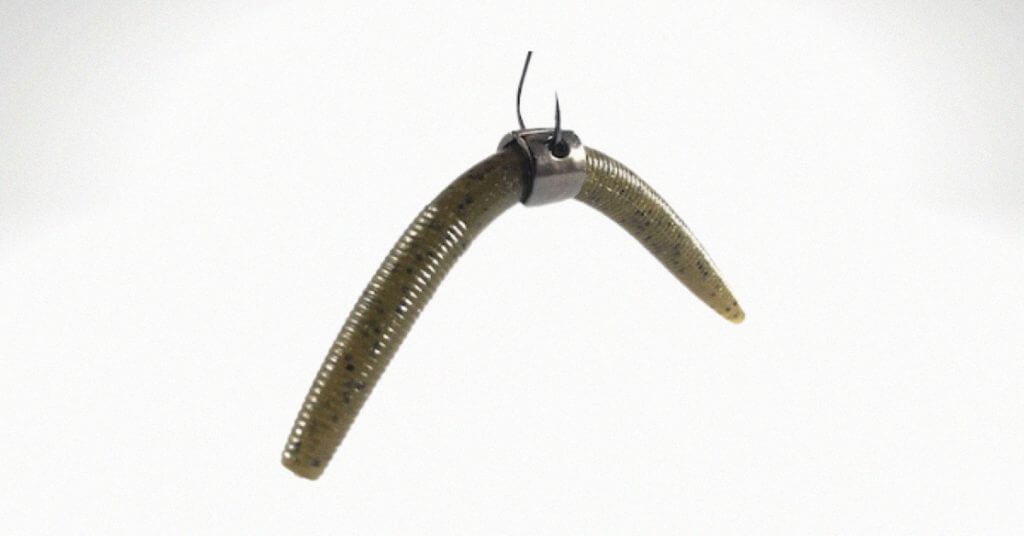
A picture is worh a thousand words. I would add a picture of the finished lure, hook, and weight to your article. Thank you
Interesting my great uncle taught me a rig very similar in the early 60s. With a Mann’s Jelly Worm. I’ve caught many different species of bass,channel cats gar and large crappie. Enjoyed the article.
Thanks Joe!